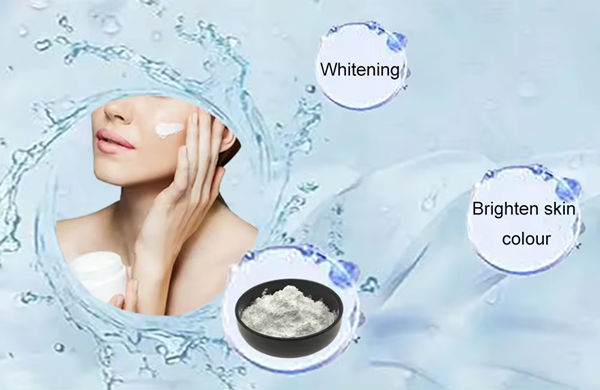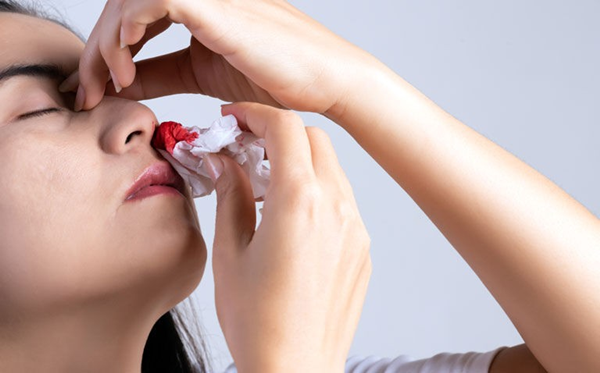Tranexamic acid (TXA) is a versatile medication that has garnered increasing attention in recent years for its wide range of applications across various medical fields. From its humble beginnings as an antifibrinolytic agent, TXA has emerged as a vital tool in the management of bleeding disorders and beyond. In this comprehensive guide, we delve into the multifaceted uses and benefits of tranexamic acid, shedding light on its efficacy, safety profile, and potential future applications.
What is Tranexamic acid ?
Tranexamic acid Powder, also known as TXA, is a synthetic derivative of the amino acid lysine. Its primary mechanism of action involves blocking the breakdown of blood clots by inhibiting the activation of plasminogen to plasmin, thus exerting antifibrinolytic effects.

Application:
1. Surgical procedures
TXA has revolutionized the field of surgery by significantly reducing blood loss and transfusion requirements in various procedures, including cardiac surgery, orthopedic surgery, and trauma surgery. Its ability to minimize hemorrhage and enhance hemostasis has made it an indispensable adjunct in the operating room.
2.Obstetrics
In obstetrics, TXA has emerged as a potent tool for the management of postpartum hemorrhage (PPH), a leading cause of maternal mortality worldwide. Administered either prophylactically or therapeutically, TXA has been shown to effectively reduce blood loss and the need for invasive interventions, thereby improving maternal outcomes.
- The application of Tranexamic acid (TXA) in obstetrics is mainly for managing postpartum hemorrhage (PPH), which is one of the main causes of death in women worldwide. TXA can prevent or treat postpartum hemorrhage, thereby reducing blood loss and the need for invasive surgery, and improving the treatment outcomes of mothers.
- TXA can be administered intravenously and is typically used in the late stages of labor or immediately after delivery. It stabilizes blood clots and reduces bleeding by inhibiting the activation of plasminogen. Multiple studies have confirmed the effectiveness of TXA in reducing postpartum hemorrhage, making it one of the important drugs in obstetric practice.
- The use of TXA can help reduce the negative effects caused by postpartum hemorrhage, including the need for blood transfusion and possible complications. By timely and effectively controlling postpartum hemorrhage, TXA can help improve the survival rate and health status of postpartum women, and promote postpartum recovery.
3. Dentistry
The hemostatic properties of TXA have found applications in dentistry, where it is utilized to control bleeding during oral surgeries, periodontal procedures, and dental extractions. Its topical application in the form of mouthwash or gel offers a convenient and efficacious means of achieving hemostasis in the oral cavity.
4. Skin beauty
Beyond its traditional medical applications, 99% Tranexamic acid has also gained traction in the field of aesthetic dermatology for the treatment of conditions such as melasma and post-inflammatory hyperpigmentation. Through its mechanism of inhibiting melanin synthesis, TXA offers a promising therapeutic option for individuals seeking to address pigmentation concerns and achieve a more uniform complexion.
- Color spots: TXA can be used to treat pigmented skin lesions, such as freckles, sunburn, and age spots. It improves uneven skin pigmentation by inhibiting the synthesis and transfer of melanin, reducing pigment deposition.
- Melanin deposition: TXA has been proven to have certain therapeutic effects in treating melanin deposition skin problems, such as dark circles and pigmented contact dermatitis. It can reduce the production and deposition of melanin, making the skin color more uniform.
- Whitening: Due to its inhibitory effect on melanin synthesis, TXA is used as a whitening agent, which can reduce pigment deposition in the skin, making it appear brighter and more uniform.

Advantages and Security:
1. Efficient hemostasis
TXA exerts potent antifibrinolytic effects, effectively stabilizing blood clots and minimizing bleeding in various clinical scenarios.
2. Reduce blood transfusion demand
By reducing blood loss and the need for transfusions, Tranexamic acid bulk not only conserves precious blood resources but also mitigates the risks associated with transfusion-related complications.
3. Good tolerance
Extensive clinical experience has demonstrated the safety and tolerability of TXA, with few reported adverse effects when administered within recommended dosage ranges.
As research into the pharmacology of TXA continues to advance, new potential applications and formulations of the medication are being explored. From its role in mitigating traumatic hemorrhage on the battlefield to its use in the management of menstrual disorders, the future holds promise for further harnessing the therapeutic potential of tranexamic acid.

Xi'an tgybio Biotech Co.,Ltd is Tranexamic acid Powder manufacturer, our factory can supply OEM/ODM One-stop service, includingcustomized packaging and labels. If you want to learn more, you can send e-mail to rebecca@tgybio.com or WhatsAPP+8618802962783.
Conclusion:
Tranexamic acid stands as a testament to the transformative power of pharmacotherapy in modern medicine. From its inception as a hemostatic agent to its diverse applications across surgical, obstetric, dental, and dermatological specialties, TXA has cemented its status as a cornerstone of clinical practice. With its proven efficacy, favorable safety profile, and ongoing research efforts, tranexamic acid continues to shape the landscape of medical care, offering hope and healing to patients worldwide.
References:
- Ker K, Roberts I, Shakur H, Coats T. Antifibrinolytic drugs for acute traumatic injury. Cochrane Database Syst Rev. 2015;(5):CD004896.
- Ducloy-Bouthors AS, Jude B, Duhamel A, Broisin F, Huissoud C, Keita-Meyer H, et al. High-dose tranexamic acid reduces blood loss in postpartum haemorrhage. Crit Care. 2011;15(2):R117.
- Mirošević Skvrce N, Alajbeg I, Alajbeg I, Đanić Hadžibegović I, Boras VV. Topical tranexamic acid as an adjuvant treatment in melasma: Side-by-side comparison clinical study. Dermatol Ther. 2019;32(6):e13136.